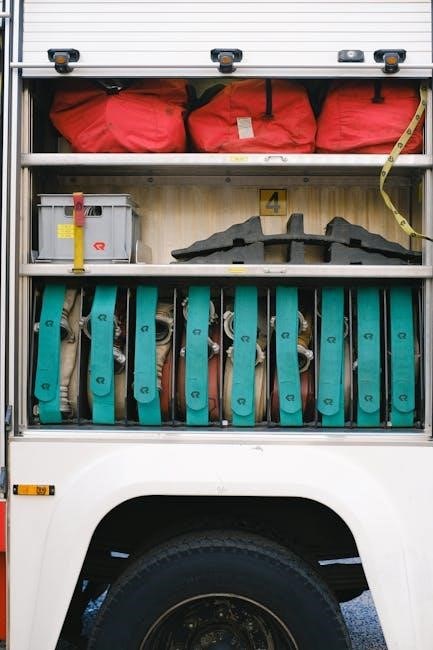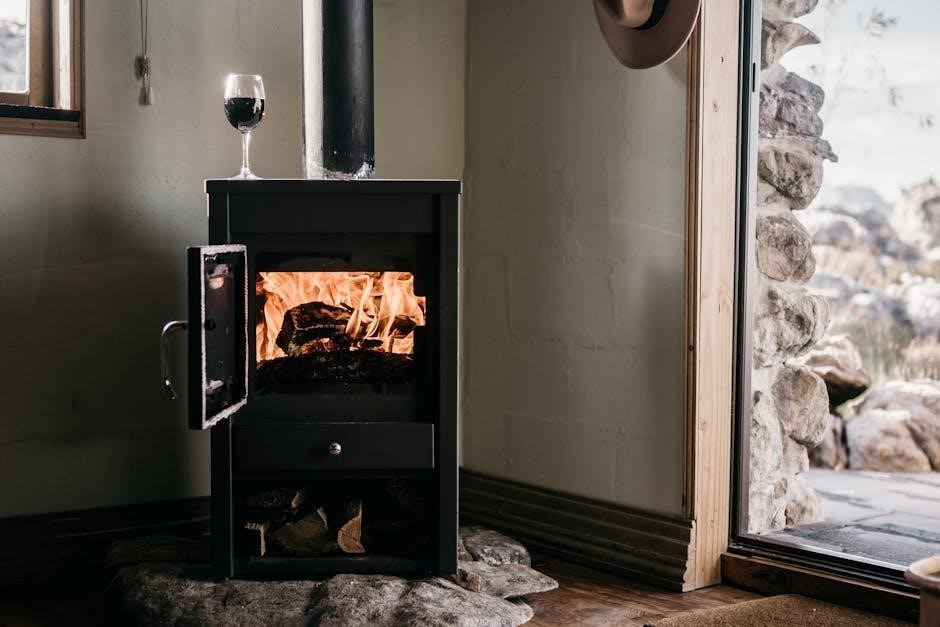The NFPA 80 fire door inspection checklist is a document outlining requirements for fire door inspections, including labels, door and frame, and testing procedures, as per the NFPA 80 standard for fire doors․
Overview of NFPA 80 Requirements
The NFPA 80 standard regulates the installation and maintenance of fire doors and other opening protectives, outlining specific requirements for their inspection and testing․ This standard is crucial in ensuring that fire doors function properly in the event of a fire, preventing the spread of flames and smoke․ The NFPA 80 requirements cover various aspects, including the labeling and signage of fire doors, their maintenance and upkeep, and the frequency of inspections and testing․ The standard also provides guidelines for the inspection and testing of fire doors, including the verification of their proper functioning and the identification of any defects or damage․ By adhering to the NFPA 80 requirements, building owners and managers can ensure that their fire doors are compliant with the standard and provide adequate protection in the event of a fire․ The standard is widely adopted and is an essential component of fire safety protocols in various industries․

Importance of Fire Door Inspections
Fire door inspections are crucial for ensuring safety and preventing fire spread, protecting lives and property, as outlined in the NFPA 80 standard requirements and guidelines always․
Frequency of Fire Door Inspections
The frequency of fire door inspections is a critical aspect of maintaining fire safety in buildings, as specified in the NFPA 80 standard․ According to the guidelines, fire doors should be inspected annually, with some components requiring more frequent checks․ The inspection schedule should be based on the type of door, its location, and the level of usage․ For example, fire doors in high-traffic areas or those subject to heavy use may require more frequent inspections․ Additionally, any damage or wear and tear on the door or its components should be addressed promptly, regardless of the scheduled inspection date․ By following the recommended inspection frequency, building owners and managers can ensure that their fire doors are functioning properly and providing the necessary level of protection in the event of a fire․ Regular inspections also help to identify potential issues before they become major problems, reducing the risk of accidents and injuries․

Components of Fire Door Inspection Checklist
Includes labels, door and frame, hinges, and closing devices, as outlined in the NFPA 80 standard for fire doors and other opening protectives, ensuring compliance and safety․
Labeling and Signage Requirements
The NFPA 80 fire door inspection checklist requires that fire doors have visible and legible labels attached by the manufacturer, indicating the door’s fire rating and other critical information․
These labels are essential for ensuring that fire doors are properly identified and maintained, and that they can be easily inspected and tested to verify their compliance with NFPA 80 standards․
Additionally, signage requirements may include the installation of signs indicating the location of fire doors, as well as signs warning against the blocking or obstruction of fire doors․
Overall, the labeling and signage requirements outlined in the NFPA 80 fire door inspection checklist are critical for maintaining the safety and effectiveness of fire doors in preventing the spread of fire and smoke․
By ensuring that fire doors are properly labeled and signed, building owners and managers can help prevent accidents and ensure compliance with NFPA 80 standards․
It is essential to follow these requirements carefully to ensure the safety of occupants and the effectiveness of fire doors in emergency situations․

Inspection Process and Requirements
Inspections involve verifying door components, including frames, hinges, and closing devices, to ensure compliance with NFPA 80 standards and regulations always;
Testing and Verification Procedures
The testing and verification procedures for fire doors involve a series of checks to ensure that the doors operate correctly and provide the required level of fire resistance․ This includes testing the door’s closing device, hinges, and frame to ensure they are properly secured and functioning as intended․ The testing procedures also involve verifying that the door is properly labeled and that all required components are present and functioning correctly․ Additionally, the testing procedures may involve conducting a drop test to ensure that the door closes properly and provides a tight seal․ The results of the testing and verification procedures must be documented and maintained as part of the fire door inspection record․ The testing and verification procedures are an important part of the fire door inspection process, as they help to ensure that the doors are functioning correctly and providing the required level of fire resistance․ Regular testing and verification helps to identify any potential issues․

Record Keeping and Maintenance
Records of fire door inspections and maintenance must be kept for a minimum of three years, as per NFPA regulations and guidelines for fire safety compliance and standards․
Compliance with NFPA 80 and NFPA 101 Standards
Compliance with NFPA 80 and NFPA 101 standards is crucial for ensuring fire safety in buildings․ The NFPA 80 standard regulates the installation and maintenance of fire doors, while NFPA 101 provides guidelines for fire prevention and life safety․ To comply with these standards, building owners and managers must ensure that fire doors are properly installed, maintained, and inspected regularly․ This includes conducting annual inspections, testing fire doors, and maintaining records of inspection and maintenance․ The NFPA 80 fire door inspection checklist is a useful tool for ensuring compliance with these standards․ By following the checklist, building owners and managers can ensure that their fire doors are in good working condition and comply with NFPA 80 and NFPA 101 standards․ This helps to prevent fires, protect lives, and reduce liability․ Regular inspections and maintenance are essential for ensuring compliance and fire safety․
